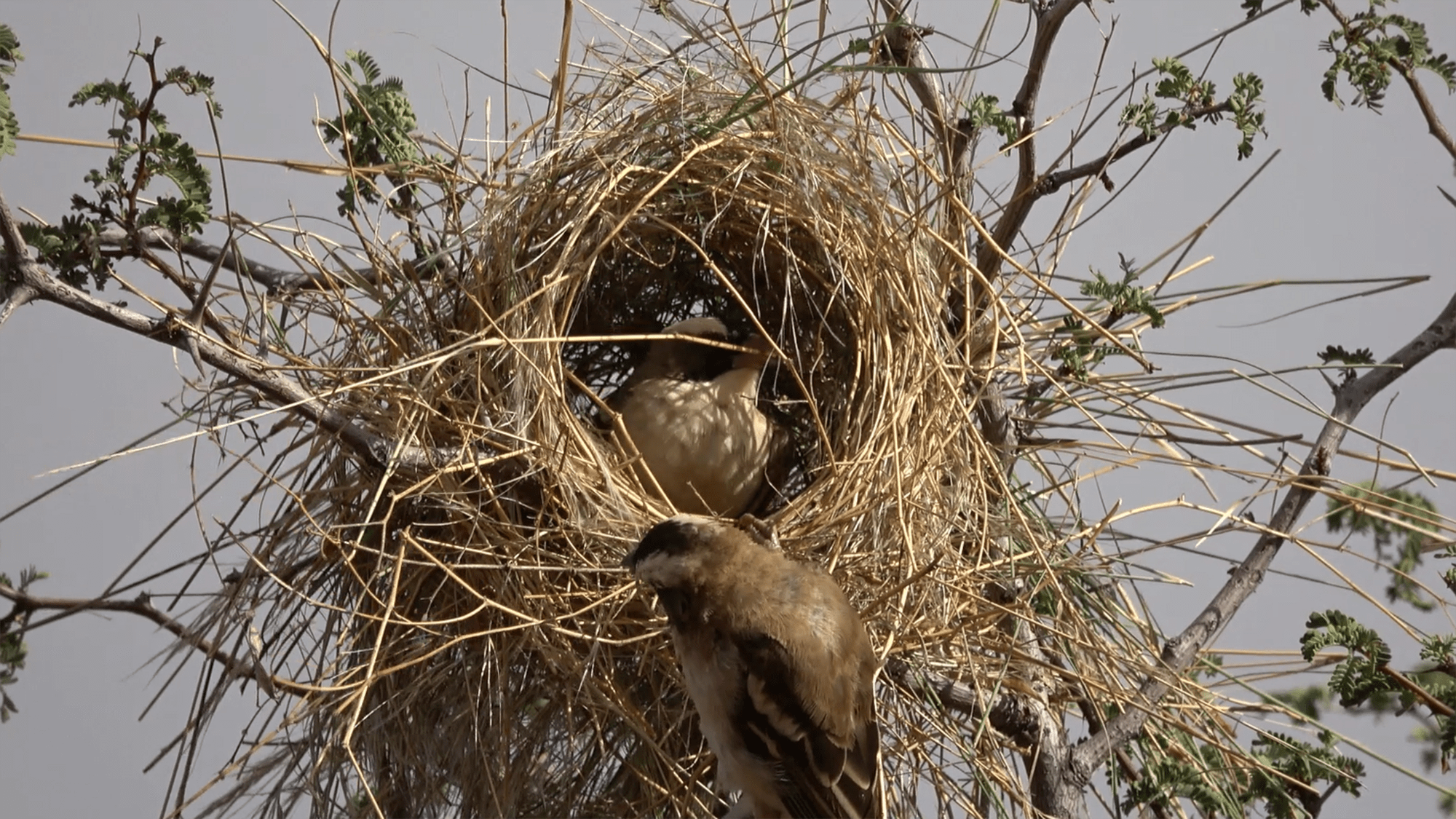Gadgets
Birds have ‘culture.’ Just look at these nests.

Among the thorny acacia trees of the Kalahari Desert, white-browed sparrow weavers are busy constructing intricate roosts and nests from grass. These social birds create diverse structures within their small territories, showcasing variations in shape, ratio, and size.
Maria Tello-Ramos, a biologist studying sparrow weavers at Tswalu Kalahari Reserve in South Africa, noticed that different groups of birds had distinct architectural styles. These groups, living in close proximity, displayed consistent variations in their constructions. Tello-Ramos and her team were intrigued by this phenomenon and set out to understand the underlying reasons behind it.
Their research, published in the journal Science, suggests that the unique structures built by the sparrow weavers are a result of cultural transmission rather than genetic factors. The birds live in groups with a dominant breeding pair and offspring, and the variations in their constructions are believed to be influenced by social learning and interactions among group members.
In their study, Tello-Ramos and her colleagues observed 43 different groups of sparrow weavers and documented the variations in their structures. They found that the differences in length and diameter between groups were consistent over time, indicating a cultural tradition within each group.
This discovery challenges the traditional notion that nest variations are solely influenced by environmental and genetic factors. The sparrow weavers’ structures provide evidence of avian tradition playing a significant role in their building behavior, showcasing the complex social dynamics within these bird communities.
“We construct lengthy tubes while they construct smaller ones.” When a new bird joined a different group, it quickly adapted to the predominant architectural style of that group, blending in with the neighborhood.
The researchers attempted to understand this phenomenon by analyzing various factors such as temperature, wind speed, distance from neighbors, bird size, genetic relatedness, and tree height between the groups. However, these variables could only explain less than three percent of the observed trends, leaving the majority of the mystery unsolved.
Turning to existing research on social species, the scientists found evidence of regional accents in birdsong, socially learned foraging behaviors, and the influence of peer groups on nest construction. The study authors concluded that cultural transmission likely explains the observed results, with birds copying building behaviors from other group members.
This new perspective on nest-building behavior in birds is both intriguing and promising, raising questions about how building styles are decided and passed on within a group. Future research is needed to explore the mechanism of transmission and how nest architecture varies over larger distances within the sparrow weaver’s range.
While the study has limitations, such as the difficulty of measuring messy nests and the potential lack of applicability to other bird species, it represents a significant discovery in the understanding of avian behavior. The researchers hope to further investigate the cultural aspects of nest building in birds and unravel more mysteries in the future.
-

 Destination7 months ago
Destination7 months agoSingapore Airlines CEO set to join board of Air India, BA News, BA
-

 Breaking News8 months ago
Breaking News8 months agoCroatia to reintroduce compulsory military draft as regional tensions soar
-

 Tech News11 months ago
Tech News11 months agoBangladeshi police agents accused of selling citizens’ personal information on Telegram
-

 Breaking News9 months ago
Breaking News9 months agoBangladesh crisis: Refaat Ahmed sworn in as Bangladesh’s new chief justice
-

 Guides & Tips9 months ago
Guides & Tips9 months agoHave Unlimited Korean Food at MANY Unlimited Topokki!
-

 Gaming8 months ago
Gaming8 months agoThe Criterion Collection announces November 2024 releases, Seven Samurai 4K and more
-

 Toys11 months ago
Toys11 months ago15 of the Best Trike & Tricycles Mums Recommend
-

 Productivity10 months ago
Productivity10 months agoHow Your Contact Center Can Become A Customer Engagement Center






















